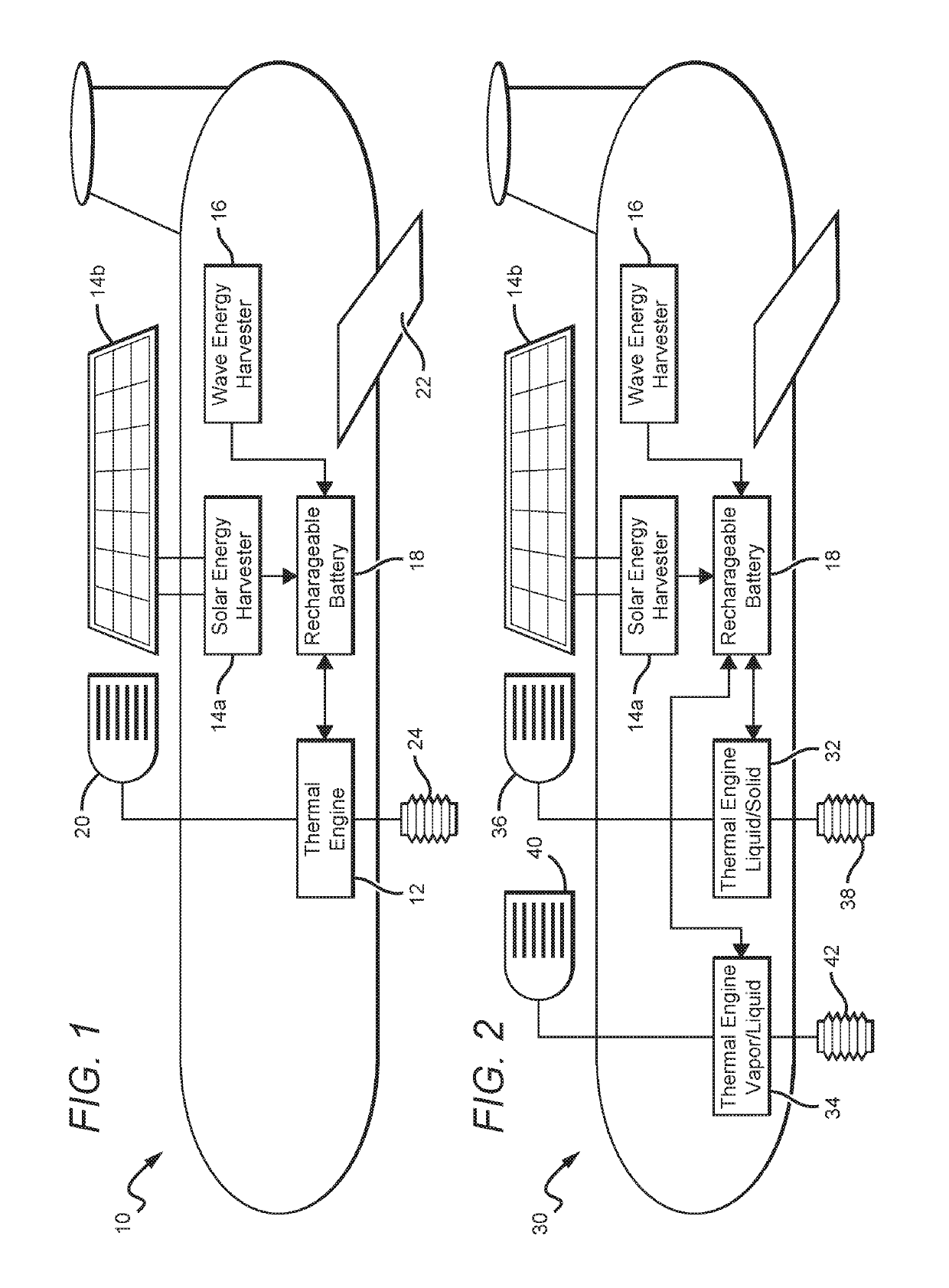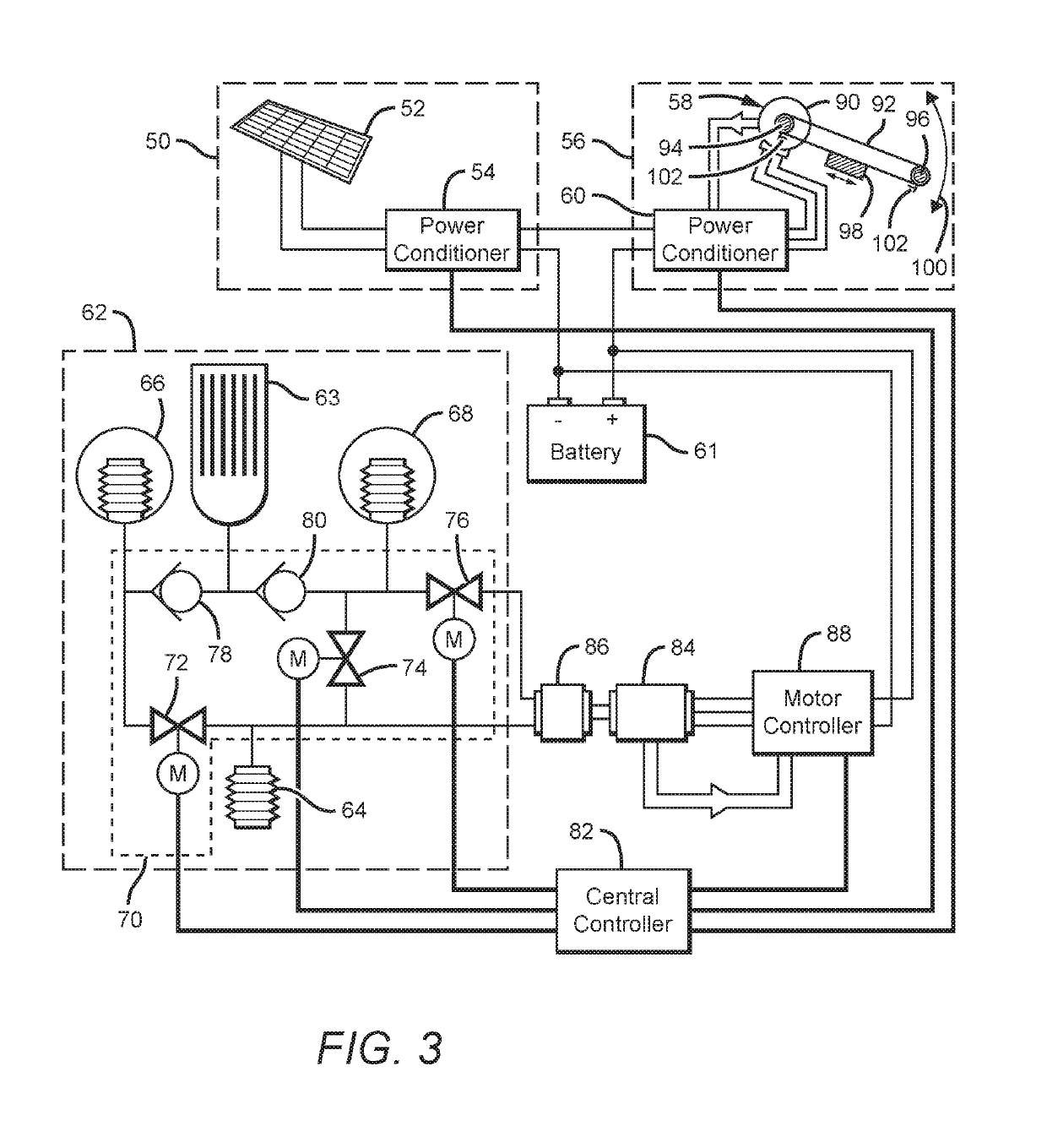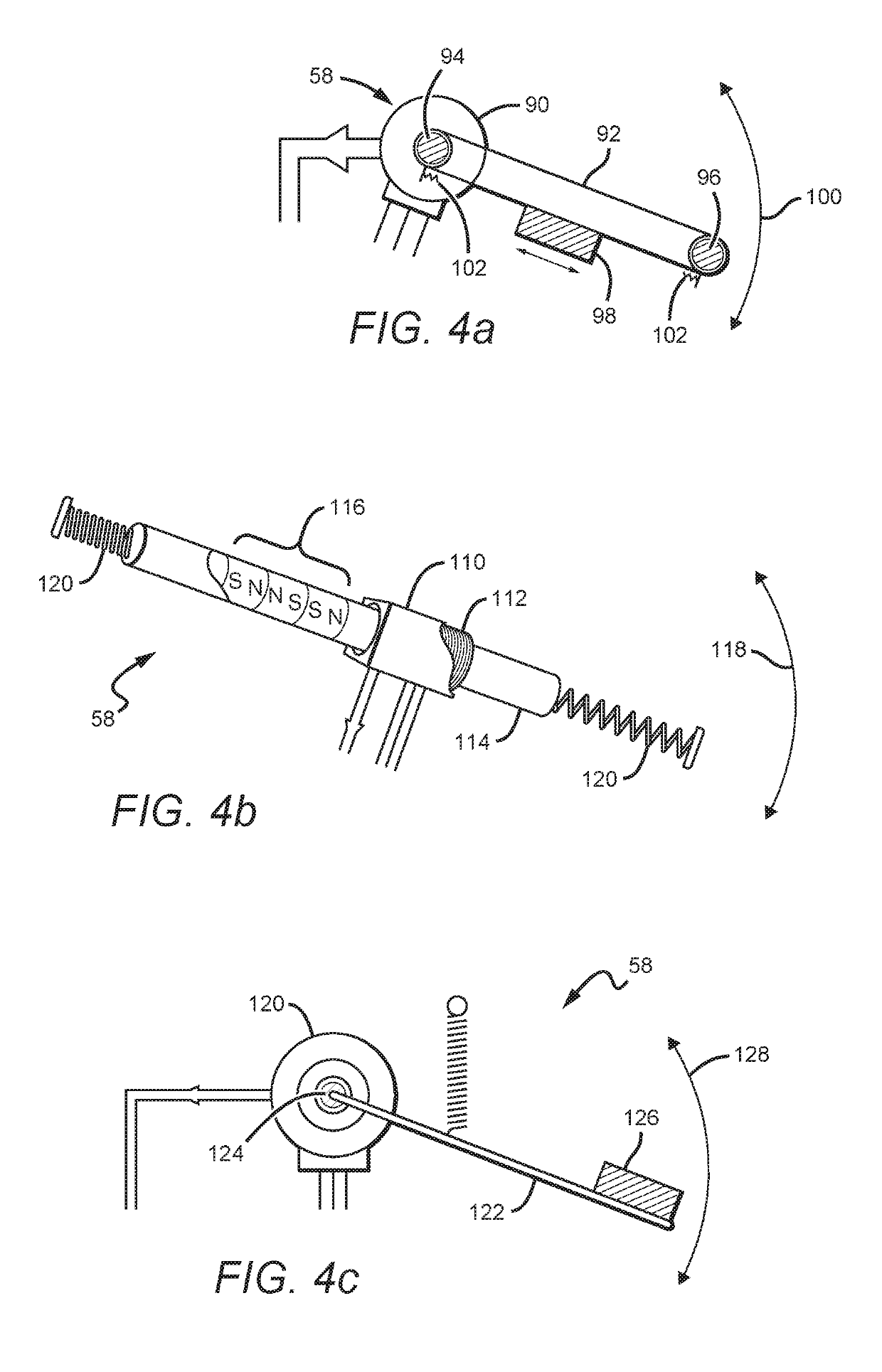Hybrid energy harvesting system for thermal-powered underwater vehicle
a technology of underwater vehicles and energy harvesting systems, applied in underwater equipment, energy supply, special-purpose vessels, etc., can solve the problems of constant need, limited total battery energy by vehicle weight, volume, speed, buoyancy, etc., to facilitate laboratory testing, expand the range and endurance of underwater vehicles, and facilitate the effect of expansion of operational areas
- Summary
- Abstract
- Description
- Claims
- Application Information
AI Technical Summary
Benefits of technology
Problems solved by technology
Method used
Image
Examples
Embodiment Construction
[0018]The present hybrid energy harvesting system expands the range and endurance of thermal-powered underwater vehicles by adding the capability to harvest energy from solar and / or wave sources. Vehicles such as gliders and profilers designed to make repeated vertical descent-ascent cycles powered by thermal engines require thermal gradients that occur only in deep water in latitudes from 0° to 50°. In shallow water, wave energy is constantly available worldwide (maximal between latitudes of 30° to 60°), and solar power ubiquitously during daylight hours (maximum solar power is most available in low latitudes). Use of these additional sources of energy and making a rechargeable battery the main energy storage means can expand operational areas for underwater vehicles to high latitudes and shallow water in areas where thermal gradients are inadequate.
[0019]In addition, the energy harvesting system described herein can use, for example, two thermal energy generators with different PC...
PUM
 Login to View More
Login to View More Abstract
Description
Claims
Application Information
 Login to View More
Login to View More - R&D
- Intellectual Property
- Life Sciences
- Materials
- Tech Scout
- Unparalleled Data Quality
- Higher Quality Content
- 60% Fewer Hallucinations
Browse by: Latest US Patents, China's latest patents, Technical Efficacy Thesaurus, Application Domain, Technology Topic, Popular Technical Reports.
© 2025 PatSnap. All rights reserved.Legal|Privacy policy|Modern Slavery Act Transparency Statement|Sitemap|About US| Contact US: help@patsnap.com



